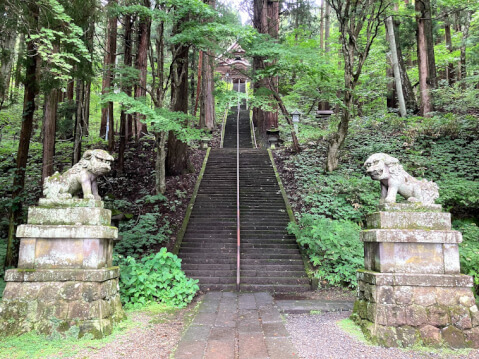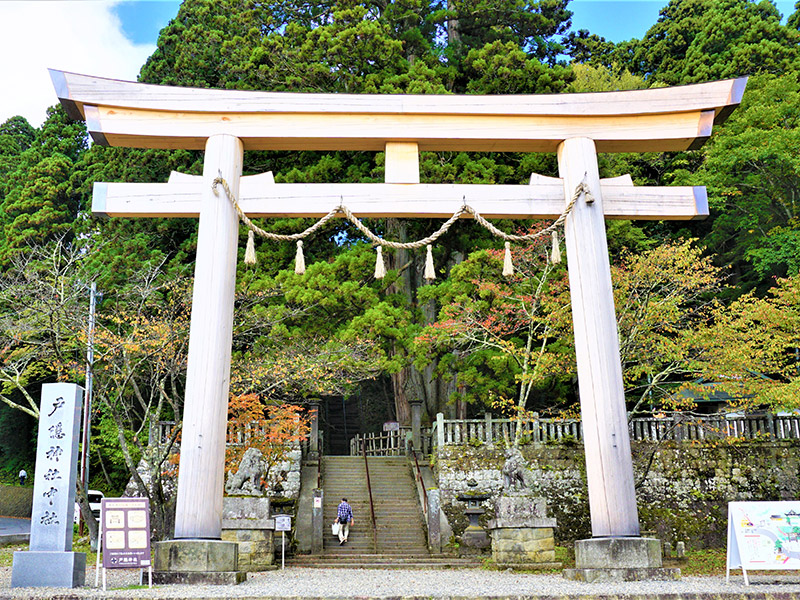Contents
Event Summary:
Date: Saturday, November 25th 2023
Location: Hokusha, Togakushi, Nagano, Japan
Activity: Visiting all five Shinto shrines and enjoying delicious local cuisine
Duration: Around 4-5 hours


The Five Shinto Shrines of Togakushi
Japan is quite an old country, and there are many places that have Shinwa, stories of Japan’s ancient legends, which is Shinto religion. One such place is the Togakushi region in the forested highland plateau.
Togakushi Shrines (戸隠神社, Togakushi Jinja) are a group of Shinto shrines located in the Togakushi mountain range in Nagano Prefecture, Japan. The Shrines consist of five shrines of natural beauty called Togakushi Shrines.
- Hokosha Shrine (Lower level) 宝光社
- Hinomikosha Shrine (火之御子社)
- Chusha Shrine (中社)
- Kuzuryusha Shrine and Okusha Shrine (九頭龍社,奥社)
Shinto Shrines
Shinto shrines are integral to the unique indigenous religion of Japan known as Shintoism. In this belief system, gods, or kami(神), are found in nature—whether in animals, plants, mountains, rivers, or ancient natural phenomena. Unlike Buddhism or Christianity, Shinto does not adhere to the concept of an absolute god. Instead, the essence of Shinto is embedded in the myriad kami dwelling in various aspects of the natural world. Japanese individuals often turn to these sacred shrines as places of worship, symbolizing a reverence for the divine presence in all things.
Approximately 3.5 hours to complete
It would take a good 3 hours if you start at ①the Hokosha Shrine and up to ⑤the Kuzuryusha Shrine and ④the Okusha Shrine through other ②③shrines. Connecting hiking routes of the five-shrine is easy and well-maintained, but some parts of the route have long steep rock stairs.

The story of the Amano-Iwado, or Heaven’s Rock Door
In this Japanese mythology, there’s a story about the sun goddess Amaterasu and her troublemaking brother, Susanoo. Susanoo caused all sorts of problems, including killing one of Amaterasu’s attendants. Fed up with his antics, Amaterasu retreated into a cave called Amano-Iwato and closed its rock door. With her gone, the world was plunged into total darkness.
The other gods weren’t thrilled with this situation since a world without the sun was a pretty grim place. So, they brainstormed a plan to get Amaterasu out of the cave. The god of wisdom suggested throwing a big party outside the cave. Uzume, the goddess of the arts, danced to get the sun goddess’s attention, while the other gods laughed and cheered merrily.
All the noise and commotion piqued Amaterasu’s curiosity, prompting her to crack the cave’s rock door open a bit to see what was happening. Seizing the opportunity, the god of strength grabbed the rock door and hurled it into the sky with all their might, thus restoring light to the world, and it was daytime once more. The rock door that was thrown became what we now know as the Togakushi mountain range.


Lower Shrine, Hokosha Shrine: This is the first shrine you encounter when ascending the mountain. It is dedicated to the deity of food and agriculture.

Middle Shrine, Chusha Shrine: It is dedicated to the deity of the warrior spirit, particularly the spirit of the legendary ninja. The path to this shrine is lined with tall cedar trees and provides a powerful energy.

Upper Shrine, Okusha Shrine: It is dedicated to the deity of the mountain. The trail to reach this shrine can be challenging, with steep staircases and a rugged path, but it offers beautiful views of the surrounding mountains.













Shintoism
Shintoism and Shinto shrines in Japan are an indigenous religion of Japan that involves the worship of Kami, which can be understood as divine spirits or gods. These Kami are believed to exist in various natural elements, such as animals, plants, mountains rivers, and other natural phenomena.
For instance, at age 400 years Ork tree at the Chusha Shrain is enshrined as symbolizing the divine spirit of the Kami. People pray for an enriched harvest, or not to happen any natural disasters to the tree.
Useful information
- Visit Website: Togakushi Shrine
- Visit Website: Hiking the 5 shrines trail in Togakushi

